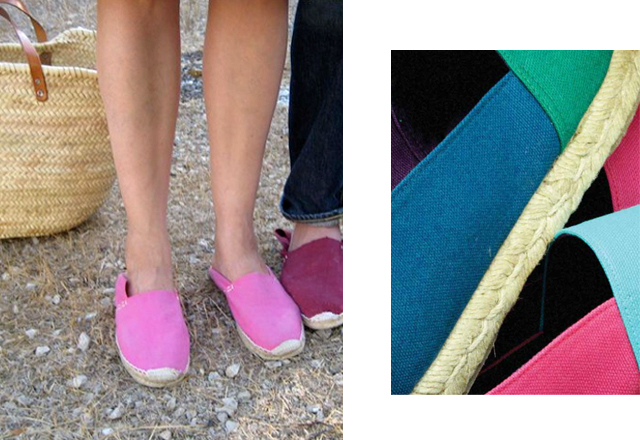
Every summer, countless feet slip into these comfortable and stylish classics.
Espadrilles have been around longer than many people realize. Although espadrilles as we know them today originated in the Pyrenees, they are also thought to be inspired by the Egyptian sandal. Based on the woven sandals, the Romans designed a covered shoe to protect the feet from the sun and the heat, which they exported and were popularized in the Roman provinces of Iberia and Gallia.
There are records written in Catalan which show that the espadrille — or espardenya — existed in the Pyrenees as far back as 1322. Their name derives from espart, the Catalan word for esparto. In Spain, its use was extended over the northern, southern and eastern regions — all part of the Aragon Crown. It was also widely used in Southern France, particularly in Occitania. With the extension of the Spanish territories, the espadrilles became popular in many South American countries.
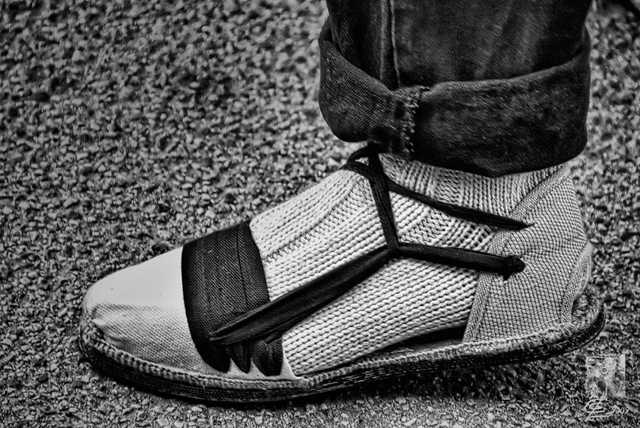
They were originally a peasant’s footwear, and used as part of the traditional costume in many of the Spanish, Basque, French and South American regions. They were also used for many years by soldiers and by urban workmen. Above, an image of a classic espadrille, which was adjusted with ribbons. This style was mostly worn in Spain, and is still the footwear worn in Catalunya and Valencia for traditional festivities and dances. Photo by Luis Calle.
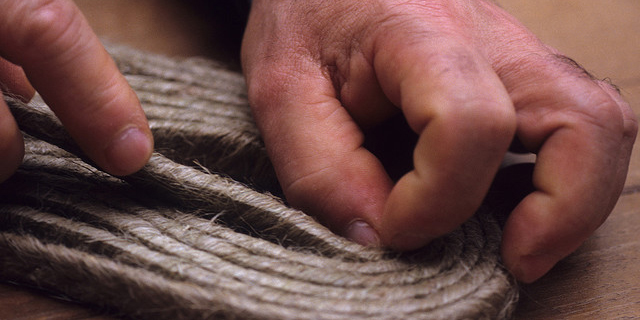
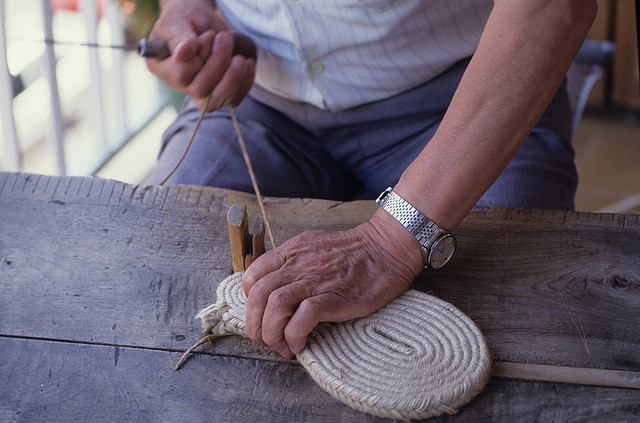
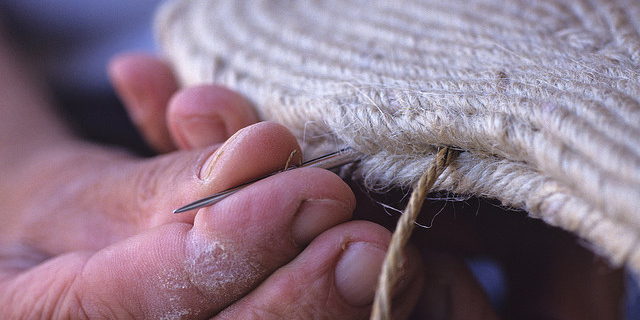
The basic espadrilles are very simple: a canvas or cotton used for the upper and a flexible sole made of natural fibers — esparto, hemp or jute. Esparto is a common wiry grass found in the Mediterranean, and was the original material used to make the soles. Nowadays, jute is more widely used, as it is the second most harvested natural fiber in the world after cotton. Many modern espadrilles have a thin layer of rubber on the sole to protect them from humidity and daily wear.
Hand made espadrilles are woven on a triangular loom. The jute twines are first braided into a long rope. These braids are then manually formed into the shape of the sole and hydraulically pressed with heat to form the final shape. They are completed with vertical stitching. The above three images are of an artisan crafting the jute soles in La Manual Alpargatera. La Manual is a centric family-run Barcelona shop and workshop founded in the 1940s, which still manufactures their espadrilles by hand. They are a reference in their field for the traditional way in which they still craft their shoes. Below, two images of an artisan from La Manual making an espadrille with esparto, which is coarser and has a distinct color. All photos of La Manual Alpargatera by Joan Carles “Vei” Tasies.
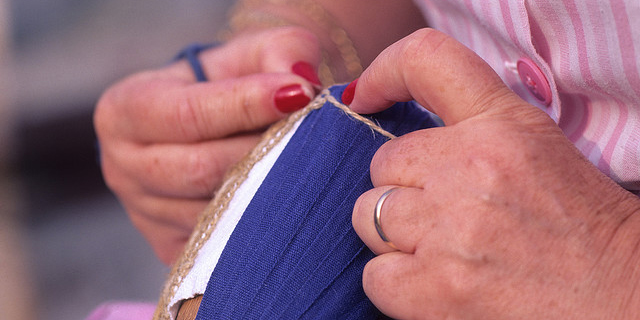
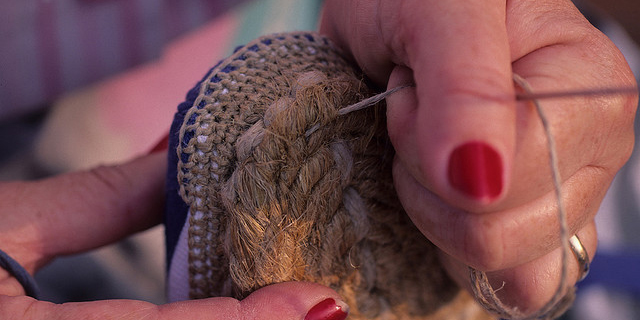
The pink espadrilles worn by the Proprietress of Ancient Industries in the top left picture are from La Manual, as well as the typical beach basket by her feet. Ancient Industries is a wonderful blog and online shop where The Proprietress sells beautifully crafted objects with timeless and traditional designs — very much with the same philosophy as we have here in BiniChic. Photo by Reed.
The photo at the top of the page right, and below on the left are of Mymu espadrilles. Mymu is a young company whose owner frequently visited Argentina during her childhood, where she became enamored of the espadrilles worn there. She now designs these very stylish and creative versions with a very high quality finish.
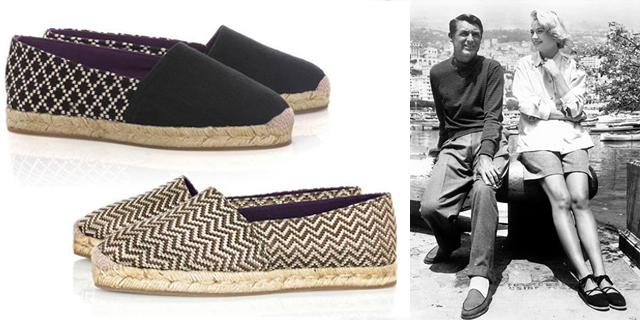
In the mid-Twentieth century, espadrilles lived a stylish renaissance. Grace Kelly, John F. Kennedy, Ernest Hemingway, Lauren Bacall and Pablo Picasso were some of their unconditional fans, and helped them turn from peasant footwear to the must-have accessory. It was also around this time that various manufacturers added wedges to the soles, bringing them into the high-fashion world. In the early Twenty-First century espadrilles have had yet another fashion renaissance, with countless designers making their own versions, and companies dedicated solely to (re)designing espadrilles.
Espadrilles today are usually worn in the spring and summer months as a casual and comfortable unisex footwear. They are no longer limited to the Mediterranean, and can often be seen on the most fashionable and trendy feet. The simpler versions are so moderately priced, one can own them in nearly every color and for every occasion. I wear mine to the beach all summer — and around the house year-round!




Lovely, little informative article… thank you!
Have you seen, visited the work of Cesar Manrique in lanzarote, those are also fine examples of integraded architecture looking at javier Barba’s work reminded me of Manrique. Very respectful and sensitive to nature as most architects should be.
This article brought back great memories. As a child that spent her summers in Basque Country, as soon as we arrived back in Saint Jean de Luz my parents would take me shopping for a new pair of espadrilles. EAch sesason brought a new style and color combination but I am longing for one particular pair: pale pink and “basque” green with pink lacing…
Lovely blog – your readers might be interested in seeing the espadrille collection at http://www.espadrillesetc.com – all from Spain and France